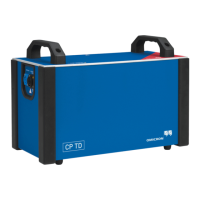69
Power Transformers
Notes on Table :
1. X wax formation comes from paraffinic oils (paraffin based). These are not
used in transformers at present in the United States but are predominate in
Europe.
2. The last overheating problem in the table says "over 700°C". Recent
laboratory discoveries have found that acetyl can be produced in trace
amounts of 500°C, which is not reflected in this table. We have several
transformers that show trace amounts of acetylene that are probably not
active arcing but are the result of high-temperature thermal faults as in the
example. It may also be the result of one arc, due to a nearby lightning strike
or voltage surge.
3. A bad connection at the bottom of a bushing can be confirmed by comparing
infrared scans of the top of a bushing with a sister bushing. When loaded,
heat from a poor connection at the bottom will migrate to the top of the
bushing, which will display a markedly higher temperature. If the top
connection is checked and found tight, the problem is probably a bad
connection at the bottom of the bushing.
Overheating 300°C - 700°C Defective contacts at bolted connections
(especially busbar), contacts with tap
changer, connections between cable and
draw-rod of bushings. Circulating currents
between yoke clamps and bolts, clamps and
laminations, in ground wiring, bad welds or
clamps in magnetic shields. Abraded
insulation between adjacent parallel
conductors in windings.
Overheating over 700°C Large circulating currents in tank and core.
Minor currents in tank walls created by high
uncompensated magnetic field. Shorted core
laminations.
Table 6-3 Transformer Faults [3.3]
Fault Examples

